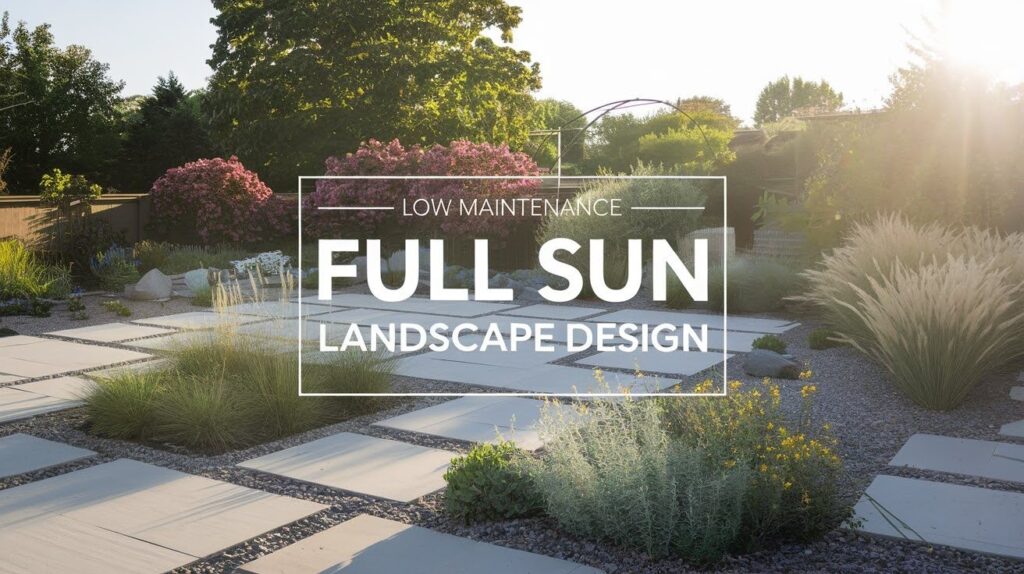Creating a low maintenance full sun landscape doesn’t have to be complicated or expensive. I know how frustrating it can be when your outdoor space demands constant attention, leaving you with little time to enjoy what you’ve worked so hard to build.
In this guide, I’ll walk you through selecting the perfect plants that love hot conditions, choosing materials that last, and planning a layout that works with nature instead of against it. You’ll learn proven strategies that I’ve tested in my garden and recommended to countless homeowners who wanted beautiful results without the endless maintenance.
Trust me when I say these methods work. I’ve spent years refining these techniques to help people like you create outdoor spaces that stay gorgeous with very little effort. Ready to build your dream low maintenance garden? Let’s get started.
Best Low Maintenance Full Sun Landscape Design Ideas
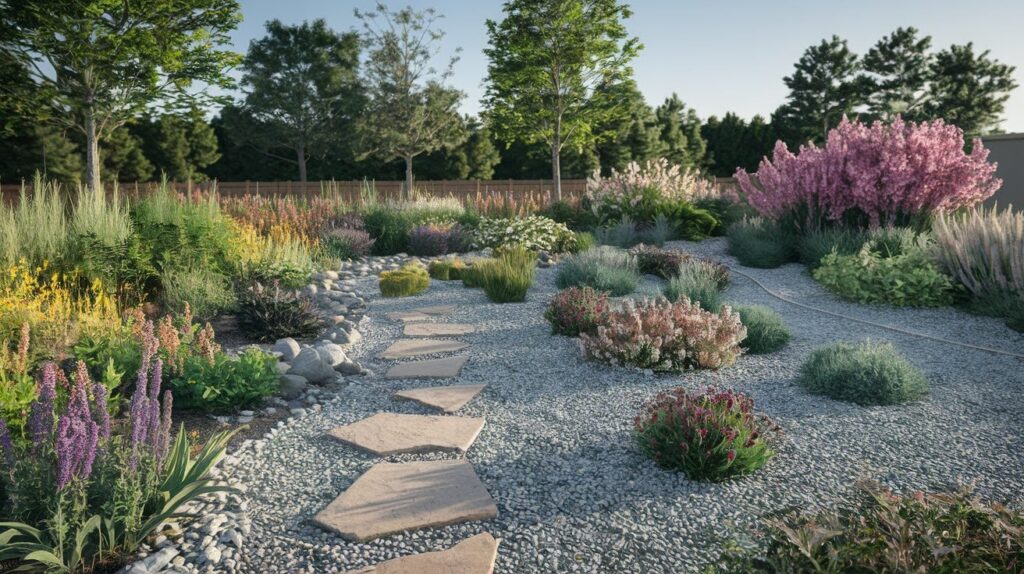
Creating a beautiful garden that loves the sun while needing minimal care from you.
Native Plant Gardens
Native plants are your best friends for low maintenance gardening. These plants already know your climate and handle your summers naturally.
Rock Gardens
Rocks can make your garden more interesting than flowers. I’ve seen rock gardens that look great year round with no watering or pruning needed.
Drought Tolerant Perennials
Perennials come back every year without replanting. Focus on plants that prefer dry conditions and thrive with minimal care.
Xeriscaping
Xeriscaping isn’t just desert plants. It’s a smart design that works with your climate while cutting your water bill and weekend chores.
17 Low Maintenance Full Sun Landscape Design Ideas
Here are proven methods I use to create beautiful gardens that thrive in hot sun with minimal effort.
Use Drought Tolerant Perennials
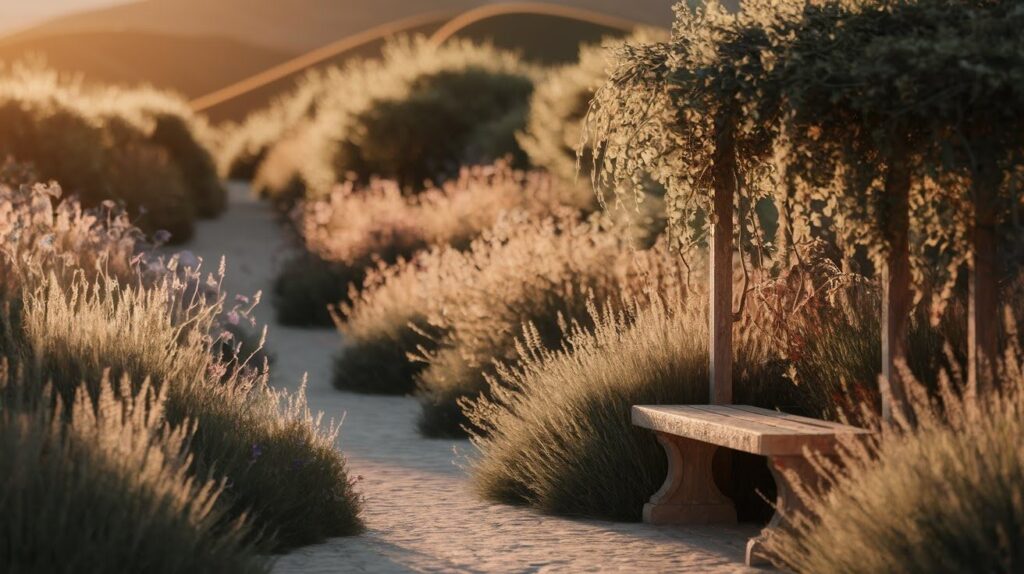
These tough plants love the heat and come back stronger every year.
I always start with lavender because it smells amazing and never complains about dry conditions. Yarrow spreads naturally to fill empty spaces. Coneflowers bloom for months without extra water.
The secret? These plants prefer being ignored. Too much care kills them faster than neglect.
Incorporate Native Plants

Native plants already know how to survive in your exact location.
I spend time walking through local parks to see what grows wild. Those same plants will flourish in your yard without babysitting.
They’ve adapted over centuries to your rainfall patterns. Your soil type. Your temperature swings.
Design A Rock Garden
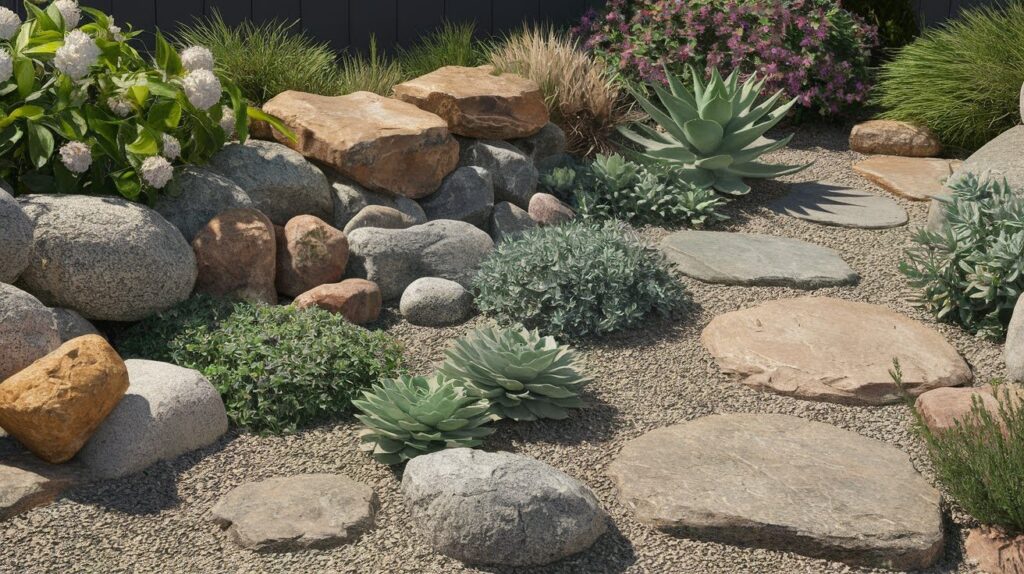
Rocks and gravel create instant structure while succulents add living color.
I use local stones because they blend naturally with the surroundings. Add some drought loving plants between the rocks.
No watering schedule needed. No fertilizing required. Just natural beauty that lasts.
Add Heat Tolerant Ground Covers
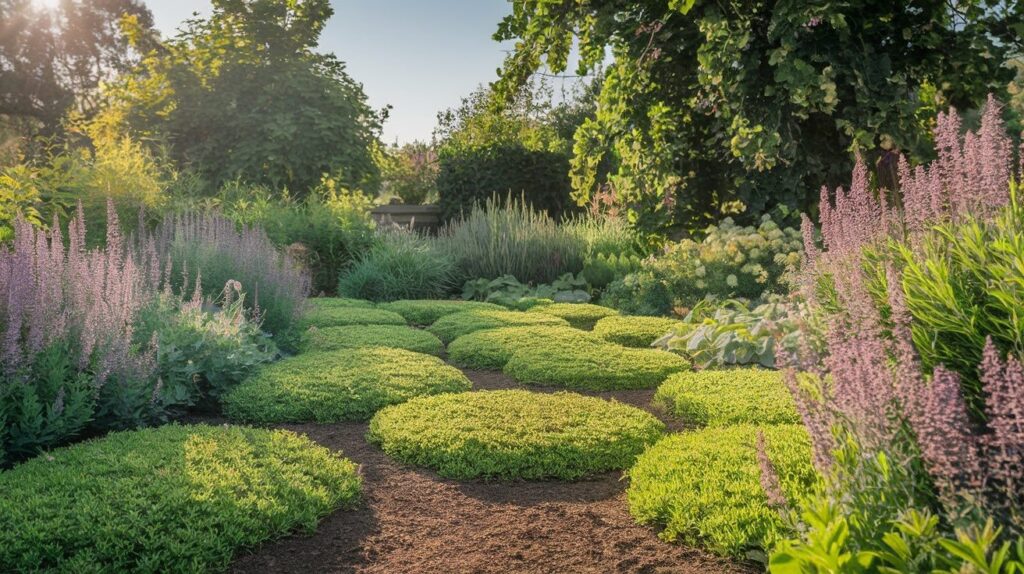
Ground covers solve two problems at once: they look great and stop weeds.
Creeping thyme releases fragrance when you walk on it. Sedum spreads quickly to cover bare soil. Both handle blazing sun without complaint.
The bonus? They save you from weeding and watering constantly.
Create Mulched Planting Beds

Mulch is like sunscreen for your plants’ roots.
I apply 2-3 inches around all my plants. It keeps soil cool during heat waves. Reduces watering needs by half.
Wood chips work great. So does gravel or shredded bark. Pick what looks best with your home’s style.
Choose Succulents And Cacti

Perfect for people who travel frequently or forget to water.
These plants store water in their leaves and stems. They actually prefer dry conditions to wet ones.
Agave creates bold architectural shapes. Aloe provides healing properties. Barrel cacti add interesting round forms.
Build A Xeriscape Garden
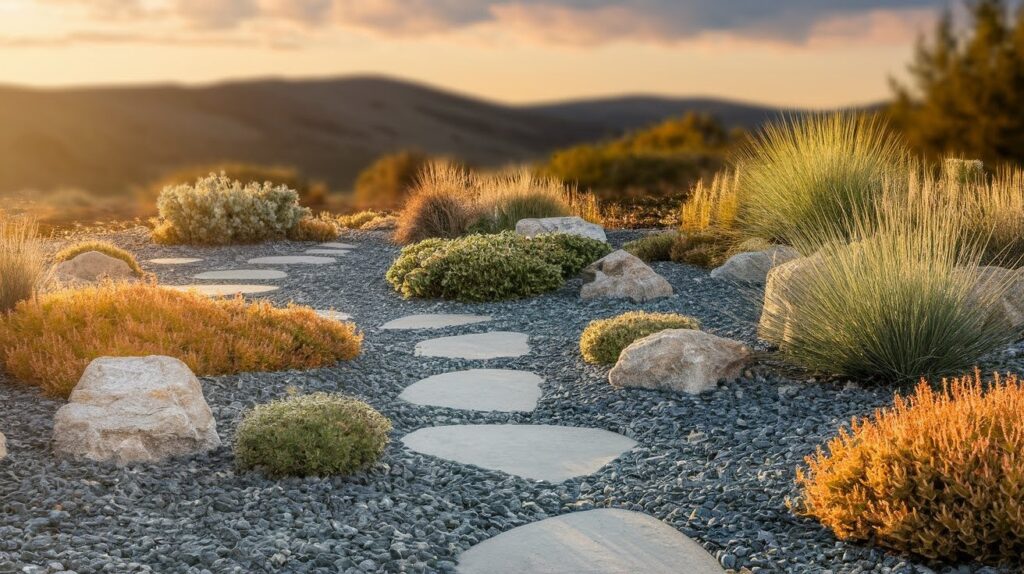
Xeriscaping cuts your water bill while creating a striking outdoor space.
I group plants by their water needs. Drought lovers go together. Plants needing more water get their own area.
The result? You water efficiently. Plants stay healthier. Your maintenance time drops dramatically.
Ready to see these ideas in action? Let’s explore specific plant combinations that work.
Include Raised Beds With Sun Loving Plants

Raised beds solve drainage problems while making weeding much easier.
I build mine 8-12 inches high using cedar or stone. The extra height means better drainage for sun loving plants. Your back will thank you when weeding time comes.
Pro tip: Fill them with quality soil mix once. Then enjoy years of better plant performance.
Use Low Maintenance Shrubs
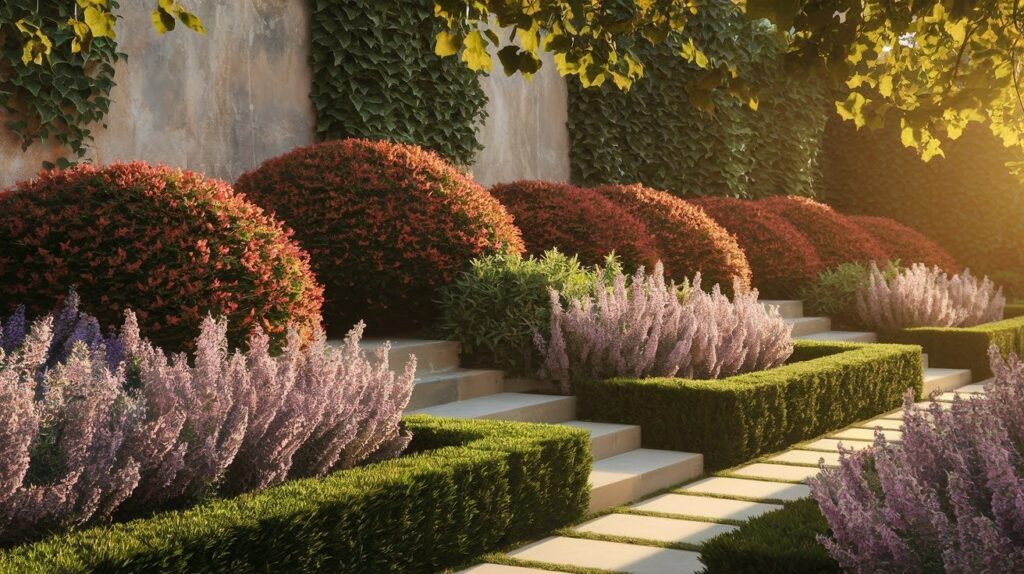
Shrubs create structure and color without constant attention.
Spirea blooms beautifully in spring then stays green all summer. Barberry adds thorny protection plus fall color. Potentilla flowers from summer through frost.
The best part? Plant them once and forget about them. They handle heat, cold, and neglect equally well.
Add Decorative Gravel Pathways
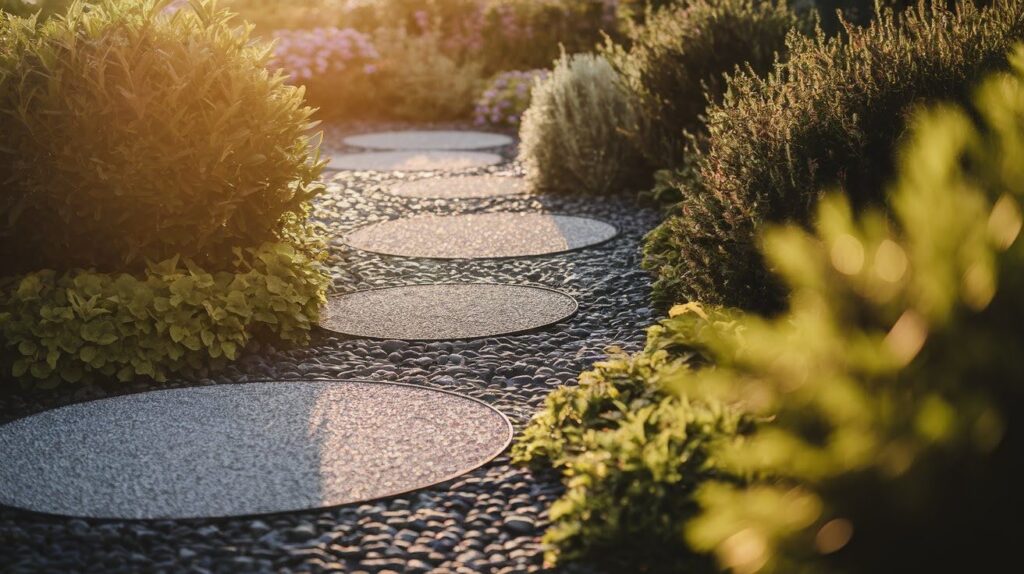
Gravel paths look professional and never need mowing or edging.
I choose colors that match my home’s exterior. Light gray gravel reflects heat. Darker stones absorb warmth for cooler climates.
Installation takes one weekend. Maintenance takes zero time afterward.
Install Drip Irrigation
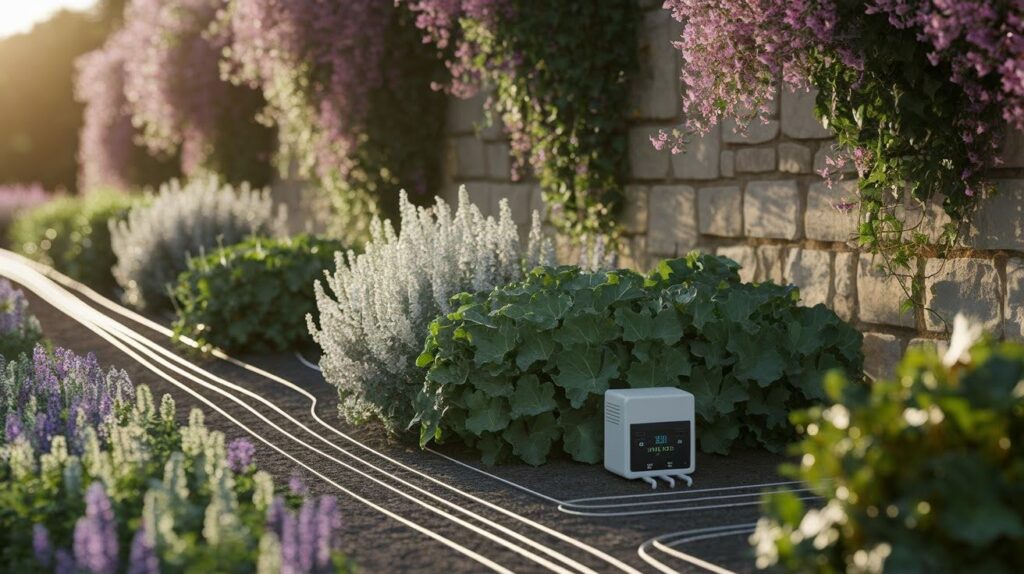
This system waters plants directly at their roots without waste.
I set up drip lines when I plant. The timer controls when watering happens. Plants get consistent moisture even when I’m on vacation.
Your water bill drops significantly. Plant health improves dramatically.
Create A Pollinator Friendly Garden
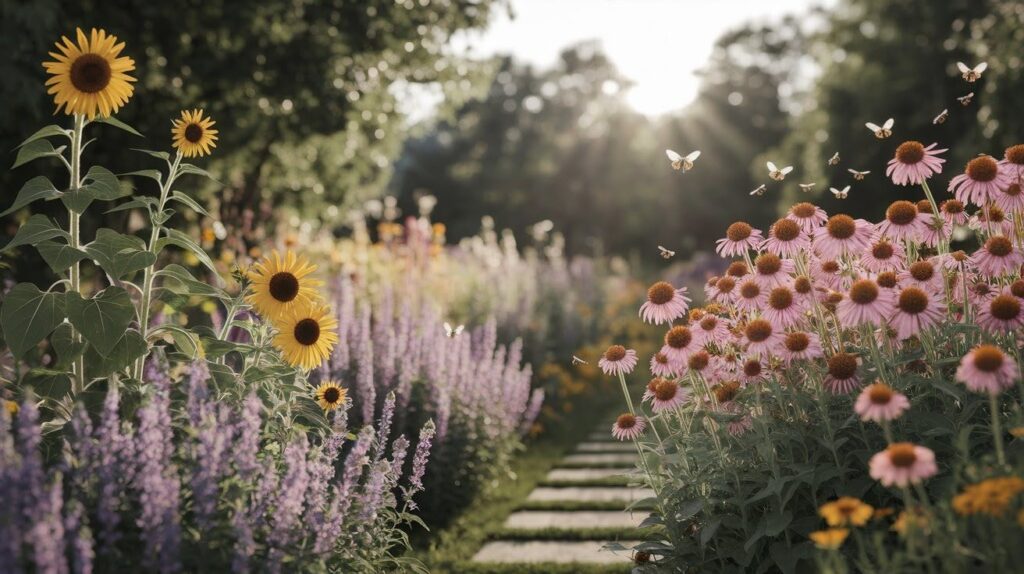
Sunflowers and black eyed Susans bring bees and butterflies to your yard.
I plant echinacea because it blooms for months and self seeds naturally. Pollinators love the nectar. I love watching the activity.
Wildlife gardens maintain themselves once established. Nature handles most of the work.
Incorporate Evergreen Plants
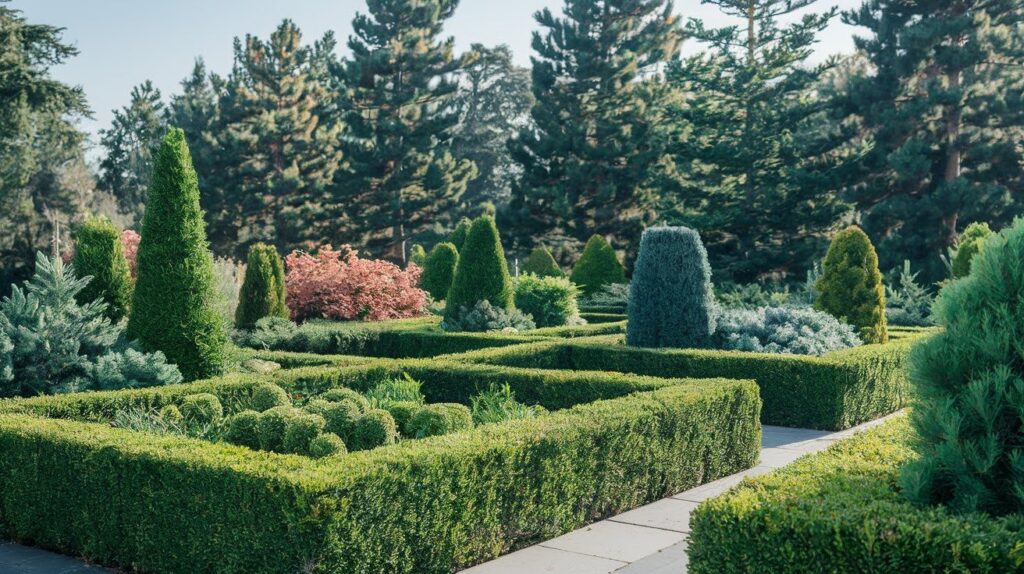
Evergreens provide color and structure during the winter months.
Boxwood creates neat hedges that need minimal trimming. Junipers come in many shapes and sizes. Dwarf pines add texture without taking over.
They work year round while deciduous plants rest.
Design A Mediterranean Inspired Landscape
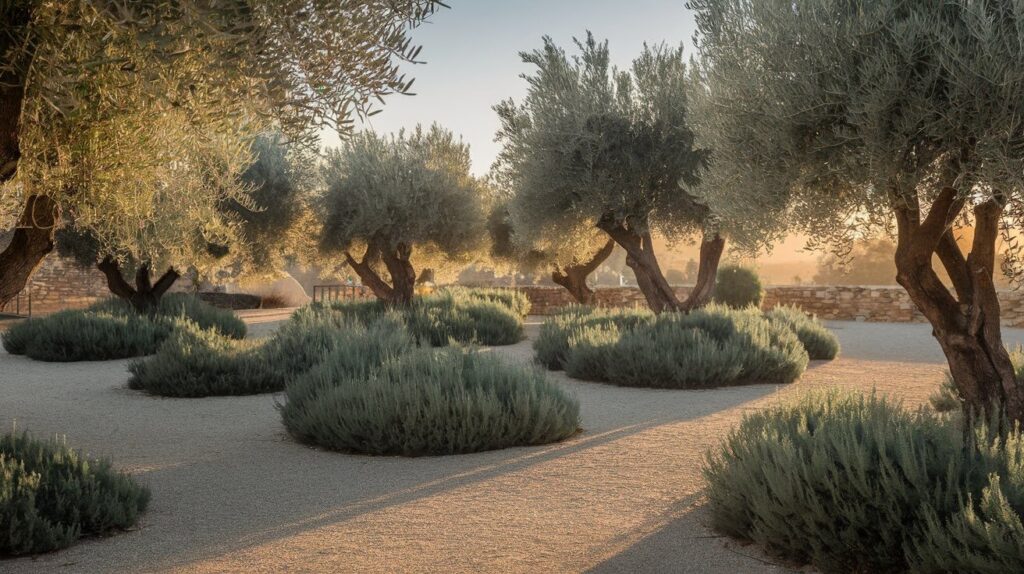
Olive trees and rosemary create a timeless, sunny garden style.
I use gravel as ground cover between plants. Gray green foliage looks sophisticated. Herbs provide cooking ingredients plus fragrance.
This style thrives in hot, dry conditions that kill other garden designs.
Add Container Gardens
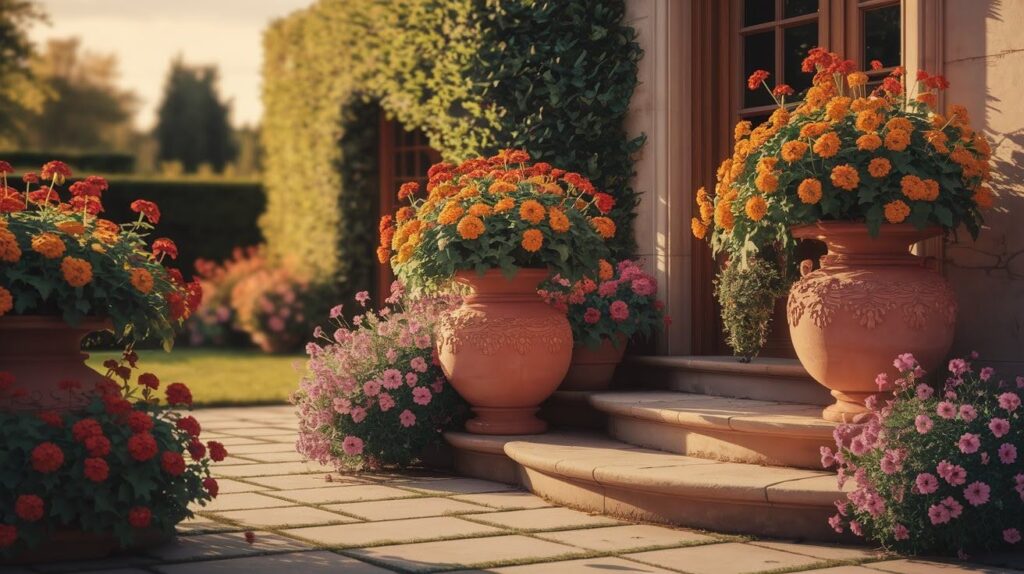
Pots let you move plants around and experiment with arrangements.
I choose large containers that hold moisture longer. Sun loving plants perform well in pots if you pick the right size.
No digging required. Change your garden layout anytime you want.
Install Hardscaping Features
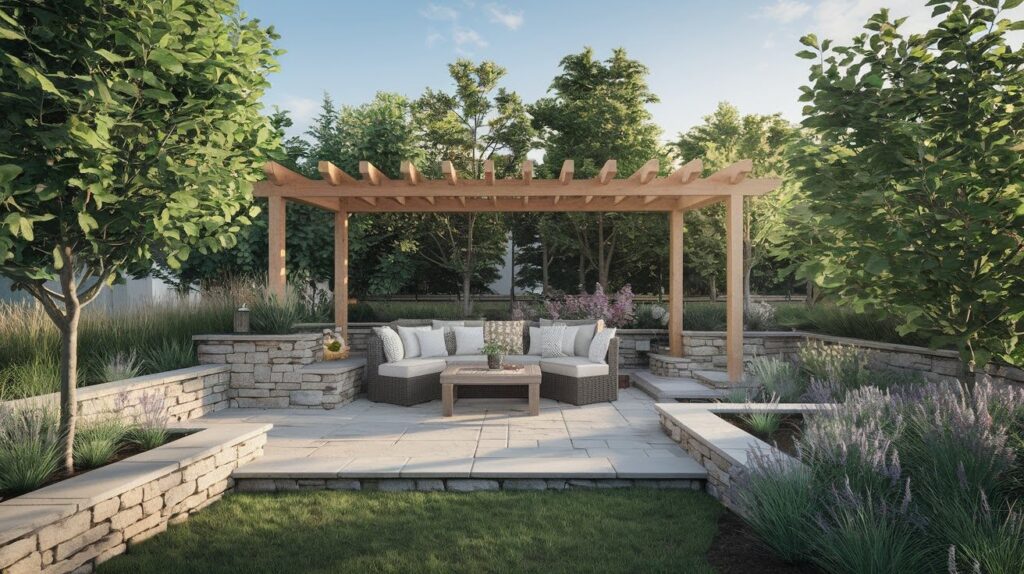
Patios and stone seating reduce lawn area while adding function.
Pergolas create shade over seating areas. Stone walls define spaces without maintenance. Less grass means less mowing time.
Hardscaping lasts decades with minimal upkeep compared to living plants.
These ideas work best when combined thoughtfully. Let’s look at how to put them together.
Common Mistakes To Avoid In Low Maintenance Full Sun Landscape Design
Here are the biggest errors I see homeowners make when creating sun gardens and how to avoid them.
Planting Shade Loving Plants In Full Sun
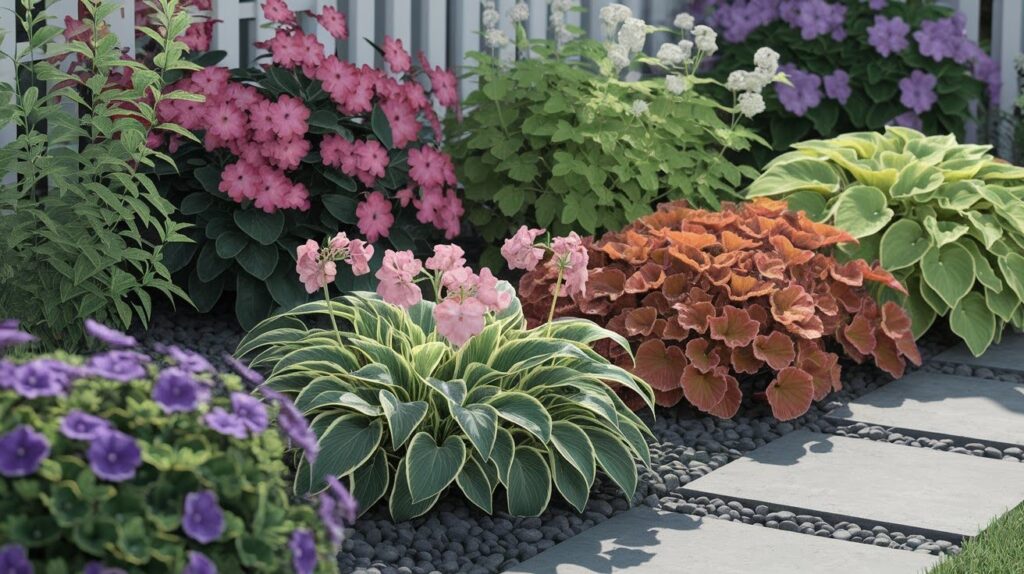
This is the fastest way to kill plants and waste money.
I’ve seen people plant hostas in blazing afternoon sun. The leaves burn within days. Impatiens wilt no matter how much you water them.
Read plant tags carefully. Full sun means 6-8 hours of direct sunlight daily. Partial shade plants can’t handle that intensity.
Your wallet will thank you for choosing the right plants from the start.
Overwatering Sun Tolerant Plants
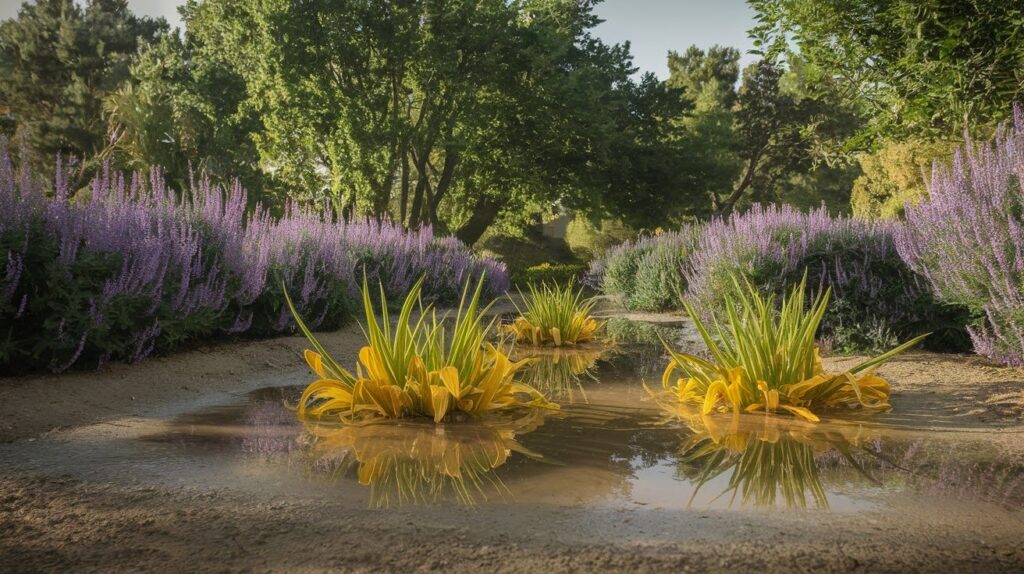
More water doesn’t equal healthier plants in sunny locations.
I watch neighbors drown their drought tolerant plants with daily watering. Root rot kills these plants faster than drought ever could.
Sun loving plants prefer deep, infrequent watering. Let the soil dry between waterings. Most people water twice as much as needed.
Using High Maintenance Grass Lawns
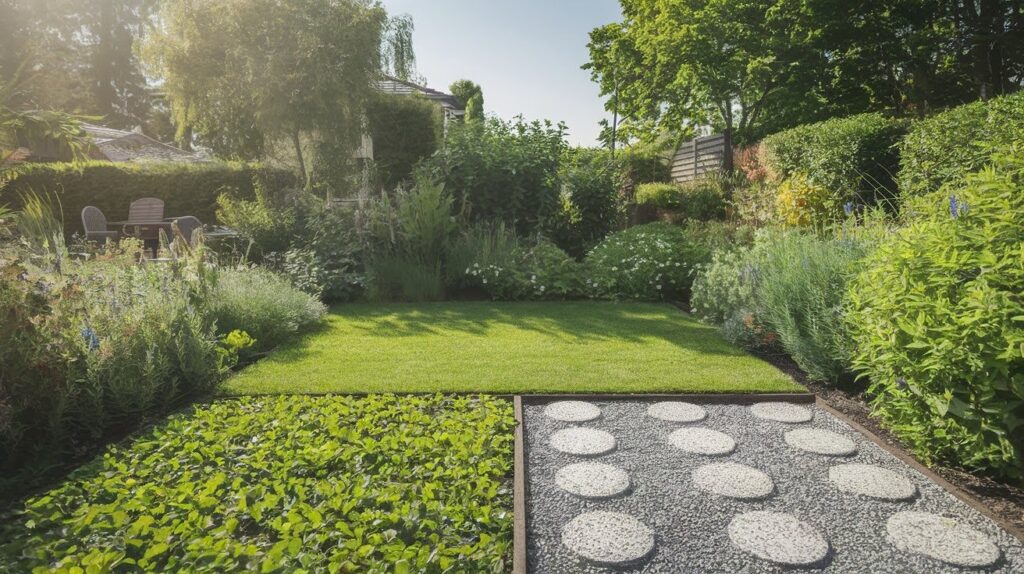
Traditional grass lawns demand constant attention in full sun areas.
Weekly mowing. Regular fertilizing. Frequent watering. Endless weeding. I’ve replaced countless grass areas with better alternatives.
Ground covers or gravel paths require a fraction of the work while looking more interesting.
Ignoring Soil Quality
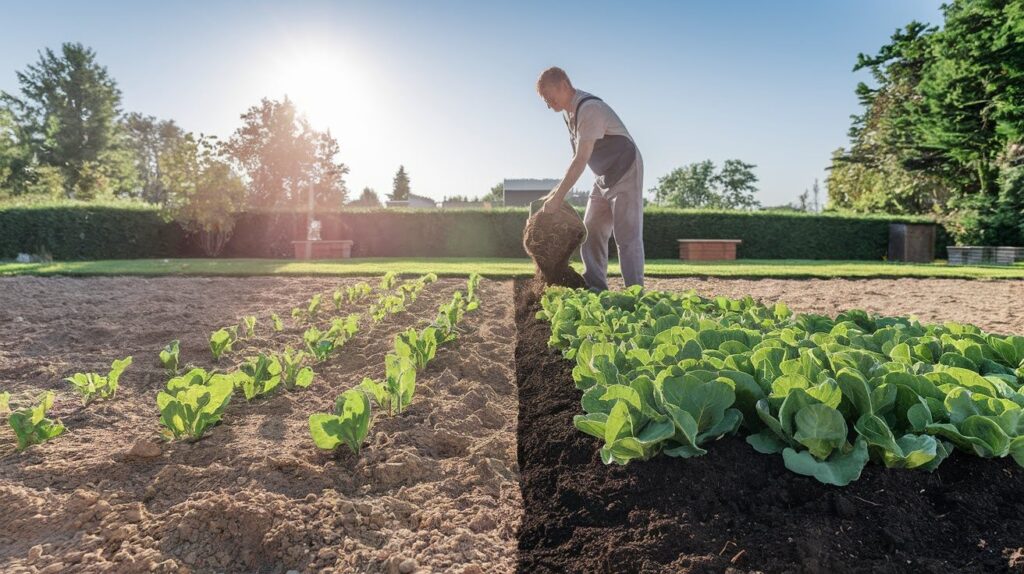
Poor soil kills even the toughest plants eventually.
I test the soil before planting anything expensive. Clay soil holds too much water. Sandy soil drains too fast. Both problems need fixing first.
Adding compost improves any soil type. This one step prevents most plant failures.
Skipping Mulch
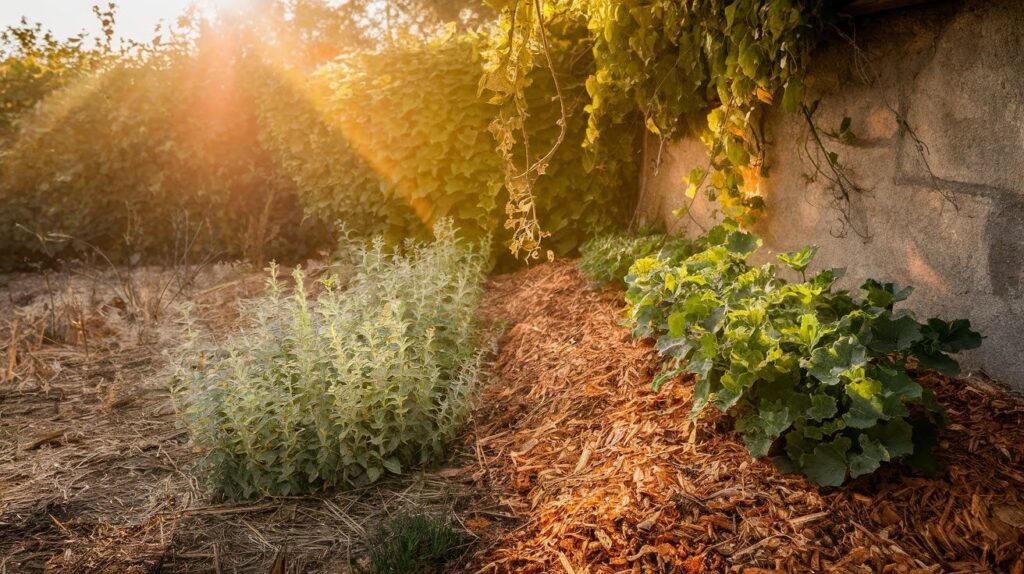
Bare soil around plants creates extra work and stressed plants.
I apply 2-3 inches of mulch around every plant I install. It keeps weeds down. Retains moisture. Protects roots from temperature swings.
Wood chips, gravel, or shredded bark all work well. Pick what matches your style.
Not Considering Mature Plant Size
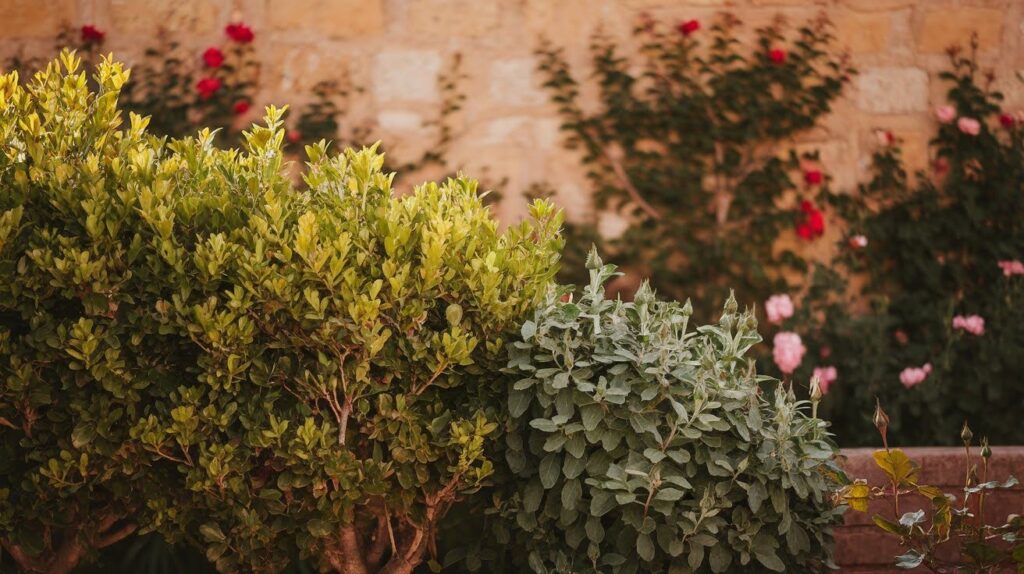
Small plants from the nursery grow bigger than you expect.
I’ve helped clients move plants that outgrew their spaces. Shrubs planted 2 feet apart end up crowded in 3 years.
Check mature sizes on plant tags. Give plants room to grow. Spacing them properly prevents future headaches.
Choosing Non Native Plants
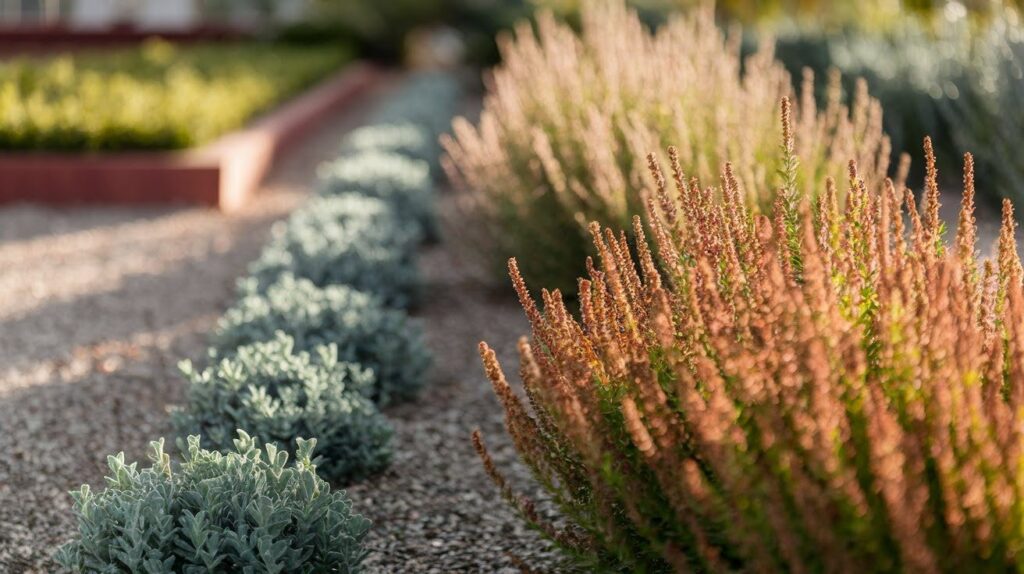
Non native plants often need more water, fertilizer, and pest control.
I focus on plants that naturally grow in my climate zone. They handle local weather patterns without extra help from me.
Native plants support local wildlife while reducing maintenance time. It’s a win for everyone.
Avoiding these mistakes saves time, money, and frustration. Ready to start planning your perfect low maintenance garden?
Quick Tips For Low Maintenance Full Sun Gardens
Plant Selection Tips:
- Choose plants labeled “full sun” only
- Pick native plants for your climate zone
- Select drought tolerant perennials over annuals
- Use ornamental grasses for easy texture
- Add succulents in hot, dry areas
Watering Tips:
- Water deeply but less frequently
- Install drip irrigation for efficiency
- Let soil dry between waterings
- Avoid overwatering sun tolerant plants
Design Tips:
- Check mature plant sizes before planting
- Group plants with similar water needs
- Use raised beds for better drainage
- Replace grass with ground covers
- Add gravel paths instead of high maintenance walkways
Maintenance Tips:
- Apply 2-3 inches of mulch around all plants
- Test and improve soil quality first
- Choose low maintenance shrubs for structure
- Use containers for flexibility
- Add hardscaping to reduce lawn area
What To Avoid:
- Planting shade plants in sunny spots
- Daily watering of drought tolerant plants
- Ignoring soil preparation
- Skipping mulch application
- Choosing high maintenance grass varieties
These simple steps create beautiful gardens that practically care for themselves.
Frequently Asked Questions
What Are The Best Plants For A Low Maintenance Full Sun Garden?
Native plants, drought tolerant perennials like lavender and coneflowers, and ornamental grasses work best. These plants handle heat naturally and need minimal care once established.
How Often Should I Water My Full Sun Garden?
Water deeply once or twice a week rather than daily light watering. Most sun loving plants prefer dry conditions between waterings to prevent root problems.
Do I Really Need Mulch In A Sunny Garden?
Yes, mulch is essential for keeping soil cool and retaining moisture in hot conditions. It also prevents weeds and reduces your overall maintenance time significantly.
Can I Create A Low Maintenance Garden On A Budget?
Start with native plants and perennials that come back each year instead of expensive annuals. Use local materials like stone or wood chips to keep costs down.
How Long Does It Take For A Low Maintenance Garden To Establish?
Most plants need one full growing season to establish strong root systems. After the first year, your maintenance requirements drop dramatically as plants become self sufficient.

